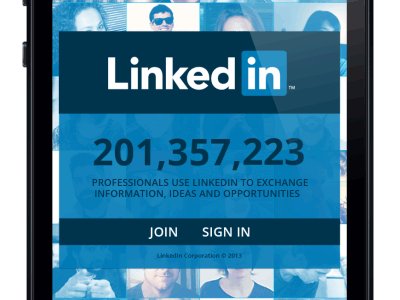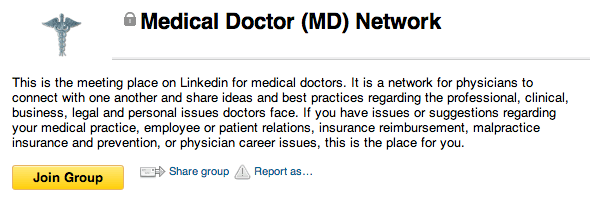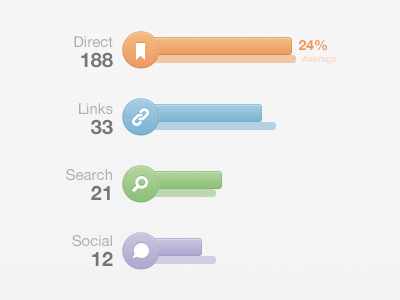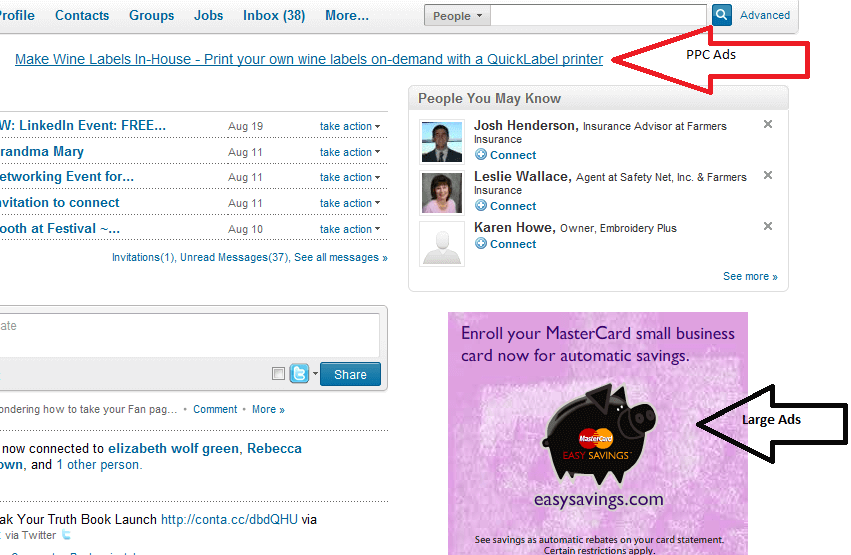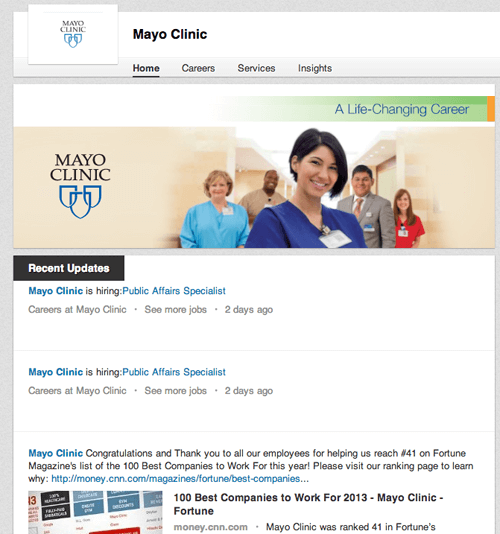As of April 2013, there were over a million medical professionals on LinkedIn in the United States alone. Are you one of them?
If so, are you active on the network with other medical professionals or patients? If not, now’s the time to sign up and start taking advantage of the largest network of professionals in the world. Did you know that LinkedIn is 277% more effective for lead generation than Facebook and Twitter?
LinkedIn presents many opportunities to connect with other like-minded medical professionals and potential patients seeking information about health care, while also giving your practice a platform to market its services to the right audiences.
Today LinkedIn has over 200 million users globally, as well as 1.5 million groups within the network. The time is now to tap into this social platform by building credibility for your medical expertise and spreading the word about your practice.
Here are 9 ways to market your practice on LinkedIn:
1. Update & Optimize Your Profile
Setup your profile to establish your presence as a medical professional on LinkedIn by filling out every section possible.
This include setting your headline, expanding upon your experience in a summary, detailing each role and duties you’ve had in your career, adding skills and expertise, adding your education, defining your interests both professional and personal, follow companies of interest and follow top influencers on LinkedIn.
When your profile is completely filled out it helps to give more of a clear story of your past and present professional experience, which blends into building your credibility.
An added bonus of a completed profile is that you’re more likely to come up on LinkedIn search due to the amount of relevant keywords on your profile, which could be an excellent source of networking.
Here is a list of medical professionals who’ve optimized their LinkedIn profile to the fullest, both to come up in search more frequently and to clearly illustrate the unique offerings of their practice.
- Bryan Vartabedian
- Joesph Kim
- Jennifer Dyer
- Kevin Pho
- Wendy Swanson
2. Join Relevant LinkedIn Groups
Join groups on LinkedIn that spark your interest and are relevant to your professional goals as a medical practitioner.
The most popular groups for doctors on LinkedIn are Medical Doctor (MD) Network, Innovations in Health and Networking for Business Professionals & Doctors.
Join one those top networking groups for doctors or find another that suits your professional and personal needs. Start conversations with other members about the content or discussions they’ve posted or help answer questions posted in the group.
Providing value to the group with your specific medical background, especially if you’re a specialized physician, is a way to straighten your credibility and network of peers.
3. Connect with Other Professionals
Begin adding other professionals to your network from the friends, coworkers, partners and peers that you already know by synching your email with LinkedIn.
From there begin researching other trusted medical professionals in your local area that would be beneficial to connect with online. Think of LinkedIn as a mobile Rolodex of your most important contacts.
Once you’re active in the groups you’ve joined, feel free to start connecting with fellow group members if they are active in the community, are sharing valuable content, you’ve had productive conversations with or if they’d just be a good contact to have in the future.
4. Share Content with Your Network
Begin sharing content from your profile or in groups that reflect the practice areas your organization focuses on, which can either be content from your practice or relevant content from others in the medical industry. You can join up to 50 groups per account (choose wisely).
After you join 50 top groups, make your life easier and use this video tip to share great content with all of them without having to manually copy and paste to each group individually.
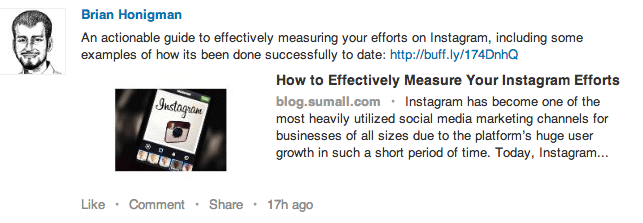
The type of content that should be shared on LinkedIn is strictly professional. Stick with sharing links, photos and videos that you would feel comfortable as a representation of your practice.
A rule of thumb is to share content related to your industry or from your blog as a catalyst for professional discussions and analysis on the network.
5. Participate in Discussions
Once you are a member of a group related to your interests or practice areas on LinkedIn it is important to have discussions with other group members. It isn’t enough to join a group and remain silent. Start a conversation by posting a question or a link to an article you’d like to discuss.
Otherwise, browse through the group to see what other members are posting about and commenting on. Join in the conversations by adding your viewpoint, expertise or friendly input.
By consistently having conversations with other professionals in the group, you’ll begin to build credibility about your expertise in front of a large audience of like-minded individuals that could be helpful to know for the future.
Offer advice and favors to others on LinkedIn to build your network and have a reliable group to reach out to in the future if your practice needs help or expertise in anyway.
6. Drive Traffic to Your Blog & Website
Post articles on your personal profile and in LinkedIn groups from your blog to help drive traffic to your best blog content. Share a healthy balance of your own content, as well as the content of others.
By offering your connections and other group members a variety of content, they are more likely to view you as source of quality information on your expertise as opposed to someone who is constantly sharing content about themselves and their practice.
Experiment with different copy in your posts to see what gets people to engage and click on your content. Post an article once on your profile and then again in a LinkedIn group using different copy and a different picture.
By alternating calls to actions and the way a piece of content is framed in a post, you can drive more traffic to the same piece of content then you would by only posting about it once.
7. Run LinkedIn Ads
Run an ad campaign on LinkedIn that targets other medical professionals active on the network. Are you trying to find new additions to your referral network? LinkedIn is an effective means of reaching the right professionals in a specific industries and roles.
As seen above, ads on LinkedIn appear around a user’s profile as they browse the social network. Begin by identifying your target audience for these ads. What is the goal of your campaign and what calls to action would be the most appealing to relevant professionals on LinkedIn?
By answering these questions, you’ll be able to more effectively map out a campaign on LinkedIn that drives connections and results for your practice.
8. Give Recommendations & Endorsements
Recommend the work of other professionals in your network, helping them gain credibility and spreading good faith to past and present colleagues, peers and professional connections. LinkedIn allows you to create an economy of favors, in the form of recommendations and endorsements.
Leave recommendations on LinkedIn as a thank you, as an act of good faith and an account of the credibility of the people in your network.
Recommendations are long form and are listed on your profile as a testament of a professional’s caliber of work. By leaving recommendations, you’re most likely to earn recommendations from others on your personal profile that can lead to more credibility to your firm and your personal brand on LinkedIn.
Endorsements are a one-click recommendation that an individual has one of the skills they’ve listed on their profile. Look through the profiles of your colleagues and endorse them for the skills they excel at the most.
The more genuine endorsements given to members of your network, the more likely you are to get them in return and continue to build the credibility of your practice on LinkedIn.
9. Setup a Company Page for Your Organization
Setup a company page for your practice on LinkedIn to begin connecting with professionals on the network. A company page acts as the profile for your practice that allows administrators to post content from the perspective of the entire practice, on behalf of all its staff.
Add a cover photo to your page, as well as a full description of your organization and its focus. Take the Mayo Clinic’s LinkedIn page as an example to build from.
Post job openings, industry news, articles, awards the practice has won and any other content that is interesting and could be of value to your audience on LinkedIn.
LinkedIn now offers sponsored updates that allow a company to pay for content posted from a company page to reach more people on the network.
This form of paid advertising allows your organization to drive quality leads from your LinkedIn updates that help build relationships, shape the perception of your practice and raise awareness to your unique offerings.
Highlight your unique expertise on your LinkedIn company page to gain the trust of others active on the network in the hopes of turning them into followers for your page and eventually, patients at your practice.
How do you plan to use LinkedIn to build your practice? Which technique seems the most effective to find new patients, grow your referral network and build strong relationships with other medical professionals? Share your comments below!
Images courtesy of Michael Castro and Matt Bango.
